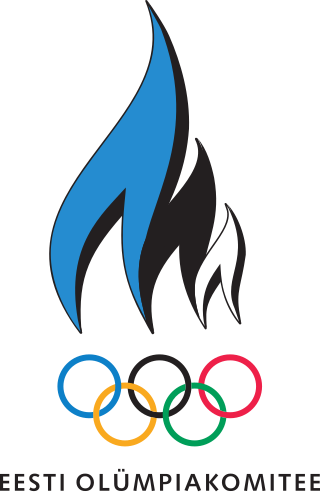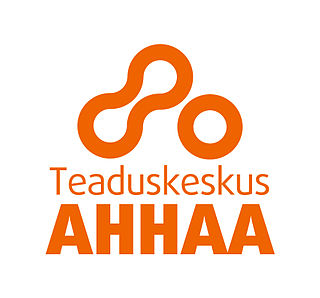
Estonian Fund for Nature (Eestimaa Looduse Fond) or ELF is an Estonian environmental non-profit organisation.

Estonian Fund for Nature (Eestimaa Looduse Fond) or ELF is an Estonian environmental non-profit organisation.
Mission of ELF is to preserve the rich natural diversity in Estonia and the world through active cooperation with individuals, business enterprises, organizations and state institutions through the following activities: [1]
ELF was established in 1991 by biologists and conservationists and in close co-operation with World Wide Fund for Nature. WWF has remained ELF's main international co-operation partner. ELF is a member of IUCN. [2]
Board members: [3]
The board is directing the activity of ELF convenes four times in a year and one third of its members will be re-elected in every two years (even years). The task of the Board is to give guidelines to the Executive Committee, workers and volunteers in planning the activities (approving annually the action plan and budget) and to counsel workers of the Fund in treating various issues. Members of the Board work on the voluntary basis.
Members of Executive Board in 2018:
Tarmo Tüür, Siim Kuresoo, Kadri Kalmus, Silvia Lotman and Kärt Vaarmari
After the restoration of independence of Estonia in 1991 a political decision was taken to restitute properties including land to the former owners or their descendants. Since it is much easier to form new protected areas when the land is owned by the state, ELF took quick action to safeguard the future of valuable areas by proposing the establishment of new big protected areas and natural parks. This led to the formation of Soomaa [4] and Karula national parks and Alam-Pedja Nature Reserve. The area of these taken together is about 740 sq kilometres. [5]
During the following years, ELF has played a significant role in the establishment of tens of other smaller protected areas in Estonia. ELF has carried on inventories of valuable habitats - wetlands, old-growth forests and meadows and participates in designing the Natura 2000 network of protected areas. In recent years ELF has more and more activities dedicated to environmental education, public awareness and public participation in environmental decisions and activities.

The International Union for Conservation of Nature (IUCN) is an international organization working in the field of nature conservation and sustainable use of natural resources. Founded in 1948, IUCN has become the global authority on the status of the natural world and the measures needed to safeguard it. It is involved in data gathering and analysis, research, field projects, advocacy, and education. IUCN's mission is to "influence, encourage and assist societies throughout the world to conserve nature and to ensure that any use of natural resources is equitable and ecologically sustainable".

Soomaa National Park is a national park in south-western Estonia. Soomaa protects 390 km², the park was created in 1993. Soomaa has been an Important Bird Area since 1989, a Ramsar site of protected wetlands since 1997 and a Natura 2000 area since 2004.

The European Green Belt initiative is a grassroots movement for nature conservation and sustainable development along the corridor of the former Iron Curtain. The term refers to an environmental initiative as well as the area it concerns. The initiative is carried out under the patronage of the International Union for Conservation of Nature and formerly Mikhail Gorbachev. It is the aim of the initiative to create the backbone of an ecological network that runs from the Barents to the Black and Adriatic Seas.
Protected areas of Estonia are regulated by the Nature Conservation Act, which was passed by the Estonian parliament on April 21, 2004 and entered into force May 10, 2004. Overall Estonia has 15403 protected areas covering 21% of the country land and 18% of it marine and coastal territory, including 6 national parks: Lahemaa National Park, Karula National Park, Soomaa National Park,Vilsandi National Park, Matsalu National Park, and Alutaguse National Park

The Estonian Olympic Committee (EOK) is responsible for the Estonia's participation in the Olympic Games.

Põhja-Kõrvemaa Nature Reserve is a protected area in Harju County, Northern Estonia, some 50 km east of Tallinn. With an area of 130.9 km2, it is the third largest nature reserve in Estonia. Dominated by forests and bogs, it aims to protect rare and endangered species, their habitats, and valuable natural landscapes.
Toomas Altnurme is an Estonian sculptor painter. He is known for his large-scale, abstract sculptures that often incorporate elements of nature and the environment. His work is characterized by a sense of movement and fluidity, as well as a strong connection to the natural world. Altnurme's work often incorporates natural materials such as stone and wood. He has also created sculptures that incorporate elements of light and sound, to create an immersive and interactive experience for viewers. His sculptures can be found in various locations across Estonia, such as parks, squares, and in front of buildings.
Ülle Kukk is an Estonian botanist and conservationist.
Categories of Natural Environment Protected Areas of Ukraine were reestablished (redefined) by the Verkhovna Rada after the fall of the Soviet Union. On 16 June 1992 the President of Ukraine Leonid Kravchuk signed the law on the Nature-Preservation Fund of Ukraine. The law redefined already the established system of environment protection management for Ukraine as a fully sovereign and independent country. National Parks in Ukraine and other protected areas of Ukraine include Ramsar sites in Ukraine, biosphere reserves of Ukraine, National Nature Parks of Ukraine, Nature Reserves of Ukraine, Regional landscape parks of Ukraine, Nature monuments of Ukraine, Protected tracts of Ukraine and Habitat/Species Managed Areas of Ukraine.

IUCN protected area categories, or IUCN protected area management categories, are categories used to classify protected areas in a system developed by the International Union for Conservation of Nature (IUCN).

Science Centre AHHAA is a science centre located in Tartu, Estonia, and is currently the largest science centre in the Baltic states. AHHAA was established to promote science and technology using interactive exhibits.
Puhtu Biological Station is a research station located in Pärnu county Lääneranna Parish, Estonia, at the coast of Baltic Sea. It is one of the oldest biology stations in Estonia.
Estonian Restoration of Independence, legally defined as the Restoration of the Republic of Estonia, was proclaimed on 20 August 1991. On that day at 23:02 local time, the Supreme Council of the Republic of Estonia, in agreement with the Estonian Committee, declared the illegal Soviet occupation and annexation of the country terminated, and proclaimed the full restoration of the independence of Estonia.

Electoral district no. 12 is one of the 12 multi-member electoral districts of the Riigikogu, the national legislature of Estonia. The district was established in 1992 when the Riigikogu was re-established following Estonia's independence from the Soviet Union. It was renamed electoral district no. 11 in 1995 following the re-organisation of electoral districts but reverted to electoral district no. 12 in 2003. It is conterminous with the county of Pärnu. The district currently elects seven of the 101 members of the Riigikogu using the open party-list proportional representation electoral system. At the 2019 parliamentary election it had 66,852 registered electors.
This is a list of the members of the Riigikogu, following the 1992 election.
Säärenõmme Nature Reserve is a nature reserve which is located in Saare County, Estonia.
Pühamets Nature Reserve is a nature reserve in located in Saare County, Estonia.
Maruorg Nature Reserve is a nature reserve in Põlva County, Estonia.